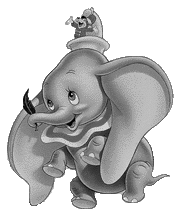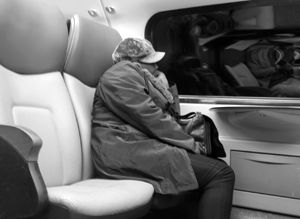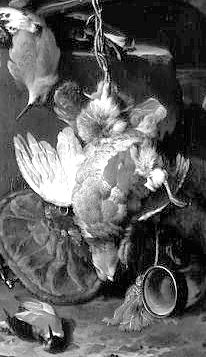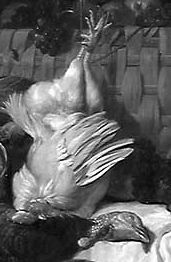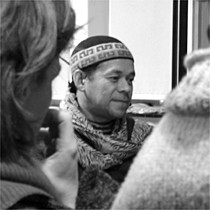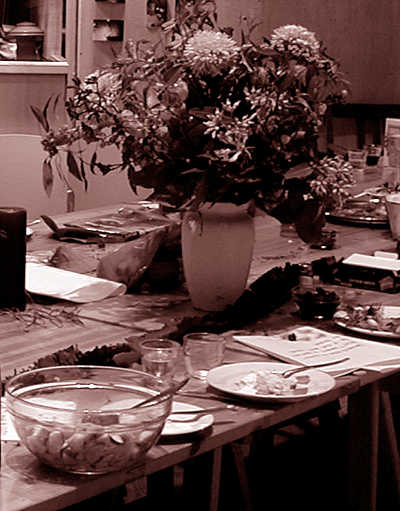|
|

|
|||||||||||
|
|
Present Past Subjects Projects Misc |
NOVEMBER 2001
DasArts Day 34.
Roof slab of the so called 'Diver's Tomb' (475 B.C.) DasArts Day 35. Via Jente, this link to an article in the Groninger Internet Courant: Kernreactor in Groninger Museum als Onderdeel Nieuwe Tentoonstelling. (Rectification: I am not an American. This work is not a "stunt".) Current status: not hypnagogic (Andreas Mavromatis, Hypnagogia, The Unique State of Consciousness Between Wakefulness and Sleep), only tired."If you never sleep you can never be awake." Kevin S. Fitzgerald, The Negative Eschatology of Maurice Blanchot. (Including: Who is Maurice Blanchot?) Always Already Perfect (a.k.a. Dzogchen) I've been thinking about this paragraph from Over-Sensitivity ever since I read it last June. It seems that Jalal has done a theoretical about-face on the issue of whether or not objects (or artworks) can 'self-liberate'. He now believes that only mortals (who possess both consciousness as well as a proper name thus excluding, in his view, objects or animals) have the potential to do this. Question at DasArts: What's an allonym?
Emptiness is to Form what Self is to Other (Emptiness = Self, Form = Other). Somehow I was reminded of this formula while reading Blanchot's preface to Thomas the Obscure on the way home today:
When Mr. Lira was informed yesterday he called me a big dumbo. (I'm still smiling about this.)
DasArts Day 36. Sue-an writes (yesterday evening):
And writes again (today):
DasArts Day 37. Abrupted Dream Bardo
Travelling from Rotterdam to Amsterdam. Sunday, 4 November 2001. DasArts Day 38. Vehicular Traffic 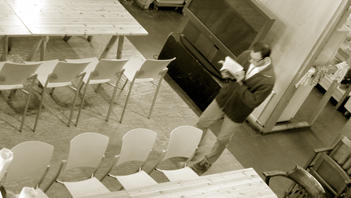
"Once a body of teaching and practice is described as being a vehicle, it must be recognised as having its own unique base and path. And if it has a base, you can start with it." Ngak'chang Rinpoche on the subject of Dzogchen 
The Garden of Crossing Tiger Cubs DasArts Day 39. Outline of Bazin's 'The Ontology of the Photographic Image'. DasArts Day 40. "Dogen thought about a lot of things, and what he thought is often very hard to grasp. I myself have no idea what he thought about many things and only a vague sense of what he thought about most of the rest. Many things he wrote I haven't read yet; many things I've tried to read I can't figure out; many things I've figured out how to read I still don't understand." (Carl Bielefeldt, Living with Dogen: Thoughts on the Relevance of His Thought.) Dogen Zen and it's Relevance for our Time: Papers presented October 23 and 24 1999 at a conference to commemorate the 800th anniversary of Dogen's birth. Step-wise Dogen (Following our evaluation of yesterday evening's presentations -- today was our last day with Jalal Toufic -- I think: 'Never let (even the best laid) plans come in the way of the moment.') Groundhog Day. The luckiest thing that ever happened to Phil (Bill Murray) was the chance to repeat Groundhog Day over and over again. No. Wait. Stop. The luckiest thing that ever happened to Phil was the ability to remember what happened to him each time he went through the loop. No. Wait. Stop. That was a super nice thing. DasArts Day 41. (On the train) flipping through a book on Performance Art this morning I see the face of the young Chris Burden. A face seemingly too young to be attached to a body that allows itself to be shot for the sake of art. Really. What the fuck was that boy thinking?
Shoot. November 19, 1971. The image of Burden shot becomes even more poignant when compared with this earlier one and this photo taken a short time after which shows Burden's face (and body) to be much matured. (Sign of a (vampiric) time lapse?) At DasArts, Arno Adelaars, Suzanne and I interview each participant of Block 15. "Are you interested in participating in an Ayahuasca (Yage) ceremony this Sunday evening?" (Now, before sleep...) I feel confused (it's been a long day). I lie in bed listening to Schubert. DasArts Day 42. (A labyrinth of doorbells.) Mitsu Hadeishi writes: After I saw that movie (Groundhog Day) I had one of the biggest enlightenment experiences of my life, funnily enough. DasArts Day 43. Immortality Suite And suddenly one of those days when everything just seems to come together. I took the day off from DasArts to go to Groningen and arrange things for the upcoming show. There I: (1) came up with a new plan for the installation, (2) discussed this with Mark and Sue-an, (3) caught an error in the working drawings for my 'Sol LeWitt' table, (4) reviewed the stones which Ieme had gathered for casting, (5) visited the aquarium in Delfzijl with Ieme and his son to look at a dolphin skeleton, (6) briefed a half dozen museum personnel on the safety concerns surrounding Nuclear Garden, and (7) bought (in quick succession) a porpoise skeleton and a dead swan. DasArts Day 44. Melchior de Hondecoeter (1636-1695)
"Having seen the going-down, look upon the coming-up; how should the setting impair the sun and the moon?" (Rumi, 1207-1273) "When you have closed your mouth on this side, open it on that, for your shout of triumph will echo in the placeless air." (Rumi, 1207-1273) DasArts Day 45. A Thousand Plateaus I've promised Alida that I would write a short note explaining why, as the mentor of Block 15, I have programmed an ayahuasca ceremony at DasArts this Sunday evening. This in order to answer any questions which may come from parties outside of the school. The 10 week curriculum of Block 15 - Event Horizon was planned for professional theater makers and choreographers, and as such, has tried to forge new information (where "New information often upsets our delicate set of balance.") and new experiences ("May you never recover.") into an 'educational' construction that both befits the experimental character of DasArts and the Event Horizon itself, ie. the curriculum has tried to put its subject first and foremost, has tried to treat the subject matter seriously and with respect, resulting hopefully in a curriculum which is in awe of its own theme. 10 weeks of research into the Event Horizon: as the story of Orpheus, as a set of sustained inquiries, as the re-enactment of a crime scene, as the uncovering of a set of "aesthetic facts", as vampire film and American musical, as bardo, singularity and altered state. Over the weeks we've come to see the Event Horizon as a threshold which one crosses and forgets, which one crosses and does not cross, which one has (always) already crossed. To cross a threshold is to lose something, to give something up, to surrender oneself to a new set of conditions. This literally happens thousands of times in one's life between waking and sleeping, between orgasms, between one (sustained) thought or fantasy and the next. Other thresholds appear more rarely and in many cases are crossed only once: learning to speak and write, puberty, marriage, menopause, the death of one's parents, one's own death. A practical question: how does one work with such thresholds? For thousands of years the indigenous people of South American rain forest have used ayahuasca to cross a very specific threshold. Under the guidance of a shaman the participant enters an altered realm where, it is said, the participant is able to communicate with his or her ancestors, and undergo spiritual, psychological and physical healing. We understand ceremonies such as this to form the basis of human theater and dance (in the sense of the staging and accompaniment of 'rites of human passage'). As it happens, a series of circumstances have brought such a shaman to DasArts at a time where we are preparing to end the block. Given our investigations and significant interest amongst our own participants and staff it seems more than appropriate that we are embracing the opportunity to work with this man.
Coming home for a day or two on the weekend turns progressively curiouser and curiouser. Each time I step in the door I have to ask myself, "Do I actually live here?" Anarchic War Under the header 'foe sharing' Jouke pull-quotes a story about the Pentagon being interested in Napster: "(...) Soldiers need a communication system that will be more nimble and flexible if they are to counter the threat from international terrorists, Wardell said: "You have a dispersed enemy who basically is operating on a peer-to-peer system, at a very low level. How are we going to attack that? Probably the same way." Appointment in Samarra I.
II. The Appointment in Samarra as told by W. Somerset Maugham. III. Rilke writes in 'The Notebook of Malte Laurids Brigge': "Moreover I now understood very well how one could carry with one, through all the years, deep in one's portfolio, the description of a dying hour. It need not even be an especially select one; they all possess something almost rare..." My nephew Austen and his mom Jane send a message from Hopkins Landing:
DasArts Day 46.
The shaman William Torres. DasArts Day 47. The aftermath of Sunday's ayahuasca ceremony continues to surprise me. (After the Euphoria, The Festival...) After lunch we watched Stan Brackhage's 'The Act of Seeing with One's Own Eyes.' Surely a paper could be written relating this film with Blanchot's essay 'Two Versions of the Imaginary'? (After Deconstruction, What Remains?) DasArts Day 48. In a recent Metropolis M article (on her favorite artists of the 60's and 70's) Renee quotes Chris Burden talking about Shoot (1971): "It was produced in a fraction of a second. To me that's interesting. It is not how long you work or how hard you work, [it's] that I could make such an important work, and I could do it so quickly." (Considering that upcoming museum show.) DasArts Day The Last.
The Cloisters at 2 A.M. (Aftermath of our final dinner together at DasArts / Dream Palace.) (Thank you (participants) Hans Bryssinck, Sato Endo, Désirée van der Heijden, Thomas Johannsen, Michelle Kurzenacker, Sarah Manya, Nancy Mauro-Flude, Leyna Papach, Nienke Rooijakkers, Fahrudin Salihbegovic, Bram de Sutter, Nicola Unger and (staff) Lieve Baert, Juul Beeren, Mark Jansen, Wouter van Loon, John Meijerink, Alida Neslo, Chris van de Velde, Susanne Winnacker.) Alamut: The Palace at 5 A.M. Dream Palace
Giacometti, The Palace at 4 A.M. (1932) (From the press release of the Giacometti show currently at the MOMA: "In line with the kind of spontaneous creativity favored by Surrealism, Giacometti claimed that The Palace at 4 a.m. (1932) appeared in its finished form before his inner eye and was quickly realized, only then revealing to the artist images, impressions, and experiences that profoundly affected him. According to the artist, the sculpture represents a time when he and a woman nightly tried to build a palace out of matchsticks, which collapsed at the slightest movement. Giacometti identifies the spinal column to the right as the woman, the standing figure to the left as his mother as she appeared to him as a child, and the phallic object toward the center as himself. In one of two drawings made of his studio in 1932, The Palace at 4 a.m. is depicted in the center of the room in detail and with a clear precision. The drawings themselves amount to an inventory of Giacometti's production to that date.") (Quantum versions...)
After the Animal, the Man Well it had to happen sooner or later. News has just broken that scientists at Advanced Cell Technology have succeeded in cloning a human embryo. (CNN's story and Advanced Cell Technology's press release.) A quote from MSNBC's coverage of the story: "If the embryo cloned by West's company were implanted in a womb, they might be able to grow a replica of the person who donated the cells that were used to create the embryo, Bazell said." After the Man, the Animal Via Juliet (at SFU!) via Azimute: Francis Bacon -- The Body, the Meat and the Spirit: Becoming Animal by Gilles Deleuze. "Far beyond any apparent sadism, the bones are like gymnastic apparatus (a skeleton-like frame) whose flesh is the acrobat. The athleticism of the body is naturally prolonged in this acrobatics of the flesh." After the Animal, the Man
Alamut: Horses (September 2000 entry on John Hawkes' novel Whistlejacket the central section of said book "which describes the rather morbid anatomical studies of the British horse painter George Stubbs.") Aaiiii, a totally uncanny and spooky footnote here: I saw George Stubbs' painting of Whistlejacket (1762) for the first time last year in London's National Gallery (on the occasion of my visit to Karl Jansen to inquire about the use of ketamine in the simulation of NDE's) and I just checked the date. It was a year ago exactly. (Also: I am in no way a horse person but I've been dreaming about horses lately.) Groninger Museum Interview: November 2001 After the Man, the Animal (Did I really wake her up to tell her how much I liked the fact that she had to turn her head away from a film that contained scenes of cruelty towards animals? I really did, yes.) Nina in Seattle, I queued the following D & G quote before I saw what you'd published on Geegaw: "A sick dog eats dirt, or else it does whatever it is that sick dogs actually do."
From A Love Letter to Oleg Kulik by Susan Silas: "I'm going to sit and read to a dog, or at least a man who wants me to treat him as though I believe that he is a dog. I should be used to this by now. My daughter is a different animal every half hour and if I am unconvinced her wrath is boundless." (Referring to Kulik's two week long performance Deitch Projects: I Bite America and America Bites Me (1997).) And from another universe (with quantum interference) Tom McCarthy chooses precisely this moment to send me the following Faulkner quote:
(Becoming a puddle, becoming a pond, becoming a lake, becoming an ocean.) Horses
Nosferaratu's coach and horses. (F. W. Murnau, 1922.) Something I missed a few months ago. The Onion presents: Talking to Your Child About the WTC Attack (HELP! This is deadly serious and very, very funny.) The Rip van Winkel Syndrome: waking up to discover that it's ALREADY the 28th of November.
Post Amsterdam / DasArts One of the nice things about kicking back for a day or two and pretending very, very hard that my life has returned to 'normal' (in reality it won't for at least another month and who knows what will happen after that...) has been the chance to peruse the pages of a few of my favorite weblogs. Some observations:
Some museum remake sketches: a proposal to tie together two of the main spaces of the Coop Himmelblau pavilion and tone down the overly dominant architecture (the artworks are not shown here). Psychic Warrior Minds can cross oceans. Last night I dreamt that I was a part of a wooden totem pole. Later on I dreamt that I was trapped on a raft in a vicious maelstrom. Later on I dreamt I was swallowed by a large whale. Minds can do almost anything (unfortunately). (Alamut: Jonah and the whale (Melville: "He goes down in the whirling heart of such a masterless commotion that he scarce heeds the moment when he drops seething into the yawning jaws awaiting him.")) (Alamut archive: The History of the Makah Whale Hunt ("A few days before their hunt they would often dig up a fresh grave and dismember a corpse. During the hunt the they would secure the torso of the corpse on their backs -- a gesture indicating their respect for their dead brethren.")) It was already dark by the time I stepped outside and unlocked my bike from the bike rack. Riding home as fast as I could in the pouring rain, I got absolutely soaked to the bone -- but I loved every minute of it. I loved riding through the wet streets filled with heavy leaves, past the headlights of cars and the houses of Kralingen, I loved to see the soft light spilling out of a passing tram up on the dijk, to see the rain lit up like a sheet of fabric by the powerful lamps under the bridge, to cross the bridge and see beneath me the red and green and white lights of a huge barge moving -- with both the current and tide at its back -- down the Maas to the sea. All this left me feeling incredibly happy.
ALAMUT.COM is artist owned and operated.
|
|
|||||||||

